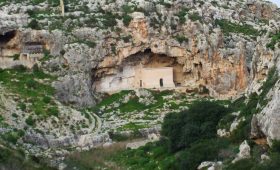Exploring the National Park of Mali in Bamako
About the Park
The National Park of Mali, located in Bamako, is a 103-hectare park within a 2,100-hectare reserve of protected forest. This green belt is crucial for the rapidly expanding capital city. Originally refurbished to commemorate Mali’s 50th anniversary of independence, the park now features several new amenities designed by Kéré Architecture. These include entry points, a youth and sports center, a restaurant, public toilets, and kiosks. The park’s design emphasizes sustainability, using local stone for construction and passive cooling systems to maintain a comfortable climate.
Wildlife and Natural Attractions
While the park itself is not a wildlife reserve, it offers a serene environment with lush greenery and scenic views. The park’s pedestrian network connects visitors to the National Museum and other natural attractions, providing a comprehensive experience of Mali’s cultural and natural heritage. Although you won’t find large wildlife like elephants or lions here, the park is a haven for birdwatchers and those interested in local flora.
Cultural Significance
The park is more than just a natural retreat; it is a cultural landmark. The use of local materials in construction reinforces Mali’s cultural heritage. Visitors can explore the park’s architectural features, which blend seamlessly with the landscape. The restaurant, strategically placed on a rock formation, offers panoramic views and reflects the natural contours of the land.
Best Time to Visit
The ideal time to explore the National Park of Mali is during the dry season, from November to April. During these months, the weather is more manageable, though daytime temperatures can still be high. Be sure to bring sun protection and stay hydrated.
Getting There
The park is conveniently located about 50 kilometers from Bamako’s city center. The most straightforward way to reach it is by flying into Bamako International Airport. From there, you can take a taxi or rent a car. Public transportation options like buses are available, but hiring a guide can offer a more insightful experience.
Local Transportation
Once inside the park, you can explore on foot via the well-maintained pedestrian paths. Hiring a local guide can enhance your visit, providing insights into the park’s history and architecture. The park’s layout is designed for easy navigation, ensuring you can enjoy its features at your own pace.
Summary
- The National Park of Mali is a 103-hectare park within a 2,100-hectare forest reserve in Bamako.
- Refurbished for Mali’s 50th independence anniversary, it includes amenities like a restaurant and sports center.
- The park emphasizes sustainability with local stone construction and passive cooling systems.
- While not a wildlife reserve, it offers rich cultural and natural experiences.
- Best visited during the dry season from November to April.
- Accessible from Bamako International Airport, with options for taxis, car rentals, or guided tours.
- Explore the park on foot or with a guide for a more informative visit.




